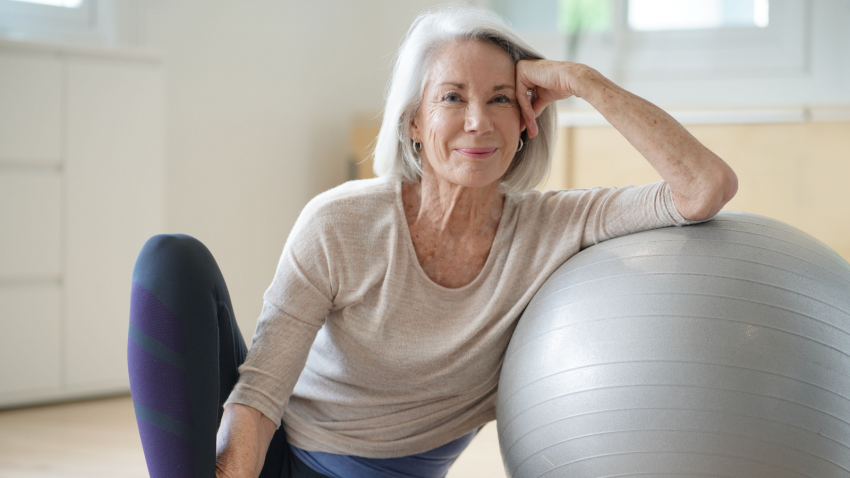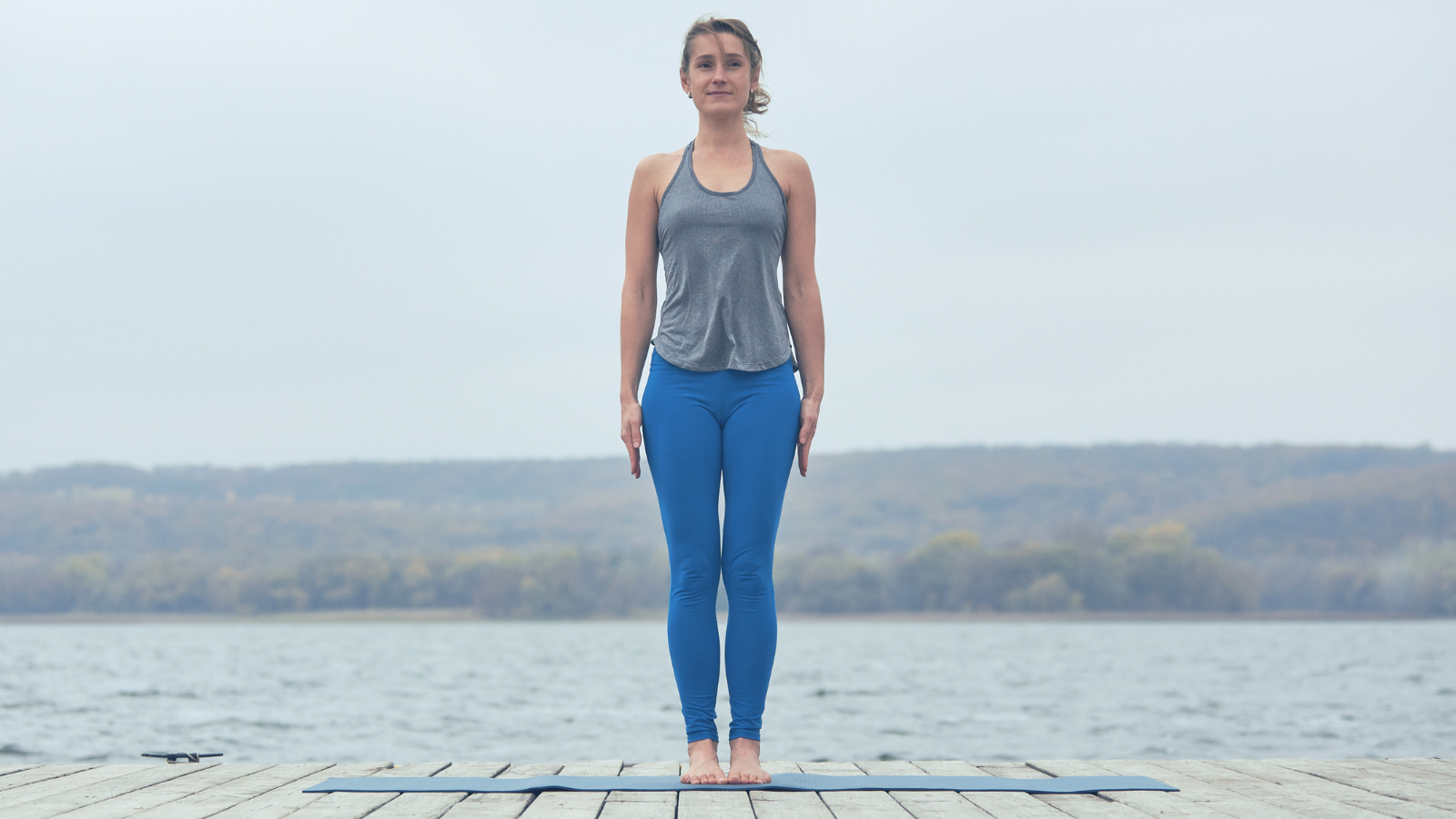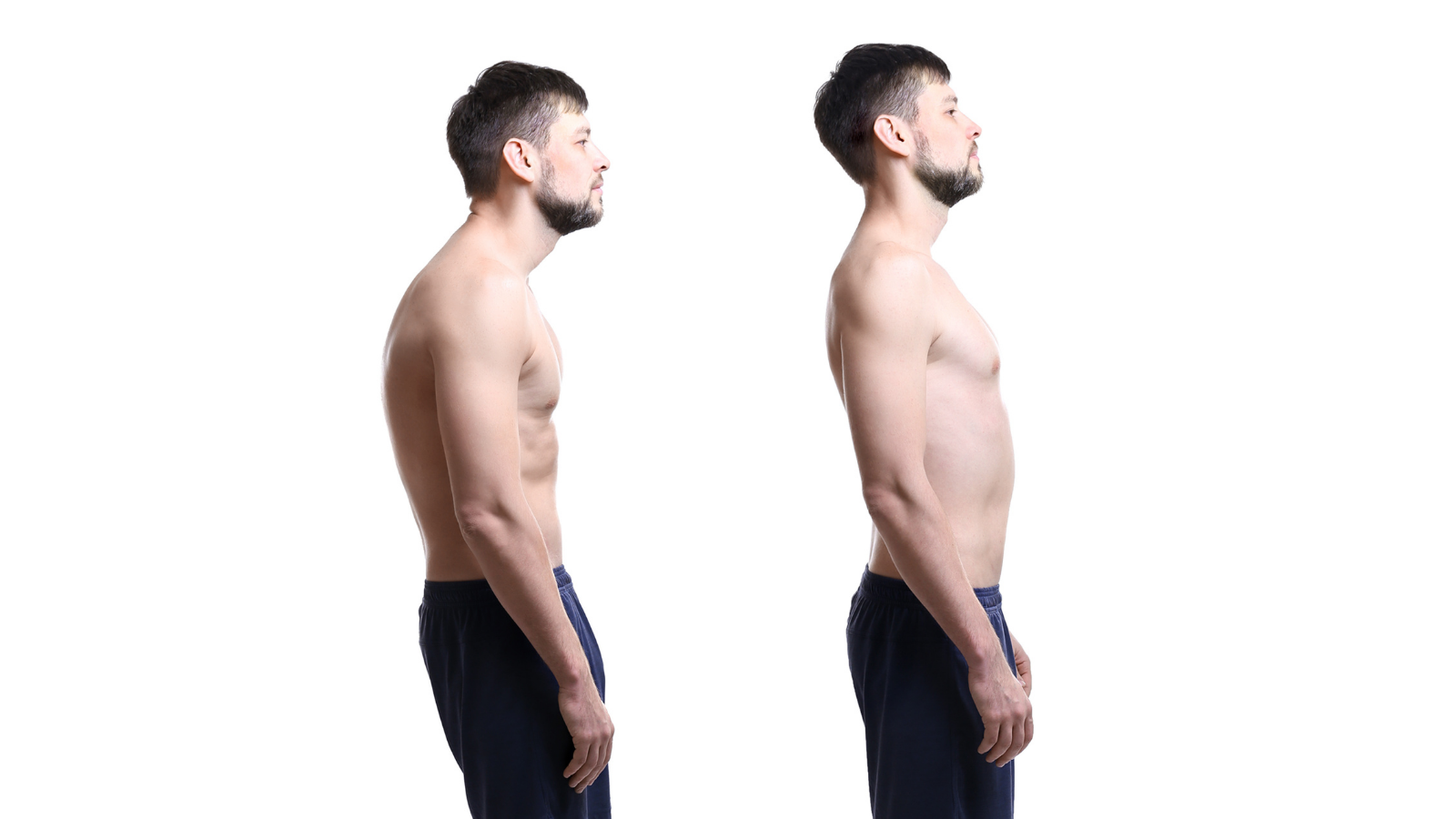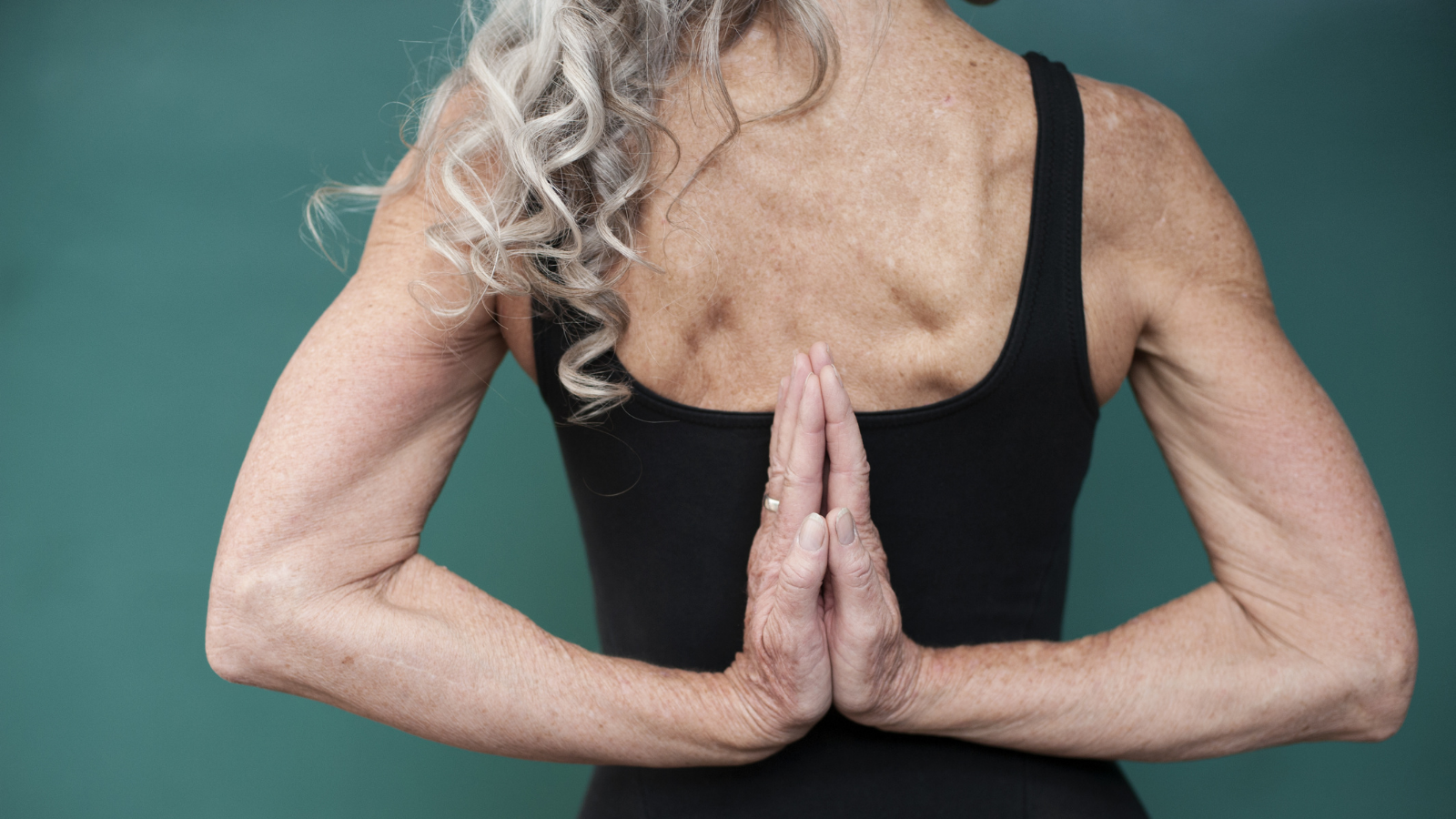View basket (0 items $0.00)

An Easy Technique to Improve Your Posture: How to Practice Yoga on a Ball
According to Webster’s 1913 Dictionary, the word combat means, “To struggle or contend, as with an opposing force; to fight with; to oppose by force, argument, etc.; to resist; a contest of violence; a struggle for supremacy.” When you see how many seemingly unrelated health problems other than chronic pain are related to too much sitting and poor posture, you’ll realize that combat is not too strong a word to use when talking about the battle between gravity and our bodies.

I talk about it all day long to my patients: how best to deal with, or resist, the posture of age. What is the posture of age, you ask? It simply has a stooped back and shoulders, with a chin that tends to find its resting point too close to the chest—something that in younger folks, we refer to as poor posture. Unfortunately, in older folks, it’s another one of those things that are considered normal. Common, yes. Normal? Not on your life.
Healthy Posture and Your Neck

Healthy posture includes having a lordotic curve (proper forward curve) in your neck, something that few people have and that fewer doctors or radiologists recognize as abnormal. While I am a huge fan of the Dakota Traction Device, there is a simple ball exercise—a stretch, really—that can help both the reverse cervical curve as well as the posture of age.
It’s this simple: if most people spend way too much time in the posture of age, we have to figure out a way for them to spend a bit of time counteracting or combating it. While inversion is great for any number of spinal issues, it’s not going to do much for this particular problem. In order to work against this posture of age, you’ll need an exercise ball.
How to Practice Yoga Backbends on an Exercise Ball
Make sure your exercise ball is “height appropriate.” When you sit on it, your knees should be at approximately 90 degrees.
-
While sitting on the ball, simply roll your butt down toward the ground and lean backward until you are lying on the ball.
-
Let your head go back into its natural lordotic curve. Make sure to put your arms out like a crucifix or over your head like you would do if a train robber put his six-gun in your belly. (Remember, though, you are lying on your back right now). This way, you are stretching all the muscles of your anterior (front) neck, as well as your anterior shoulders, biceps, and chest muscles.
-
Now, just stretch. Don’t do any sit-ups or crunches. Just lie there and feel everything stretch.
-
Feel free to move. Roll around a bit on the ball while you are stretching.
-
While there’s not a set time limit, try and do at least a minute. For those of you just starting out, you may need to do considerably less until you get used to it. Two or three minutes or more would be better.
This practice is going to help you much more before the pain is raging (or better yet, before you even have pain), not just when those upper trapezius trigger points are fired up and you are hurting.

If you have a job that entails lots of driving, sitting at a desk, hunched over a computer, or any number of other jobs, you may want to consider this simple routine. Also, if you are a person who likes to sew, knit, read (especially in bed with your head propped up), or have spent years doing too many sit-ups, crunches, bench presses, pushups, arm curls, or exercises that build the front side of the upper body, while neglecting the back (yoga’s backbends such as Locust Pose (Salabhasana), Bow Pose (Dhanurasana) or Bridge Pose (Setu Bandhasana), you’ll need to do these as well.
Click Below to Register:
Reprinted with permission from Dr. Russell Schierling.com

Dr. Schierling is a licensed chiropractor and world-renowned chronic pain specialist. Dr. Schierling specializes in a holistic approach to helping end his patients’ chronic pain, which includes Scar Tissue Remodeling Therapy.
Featured Courses









